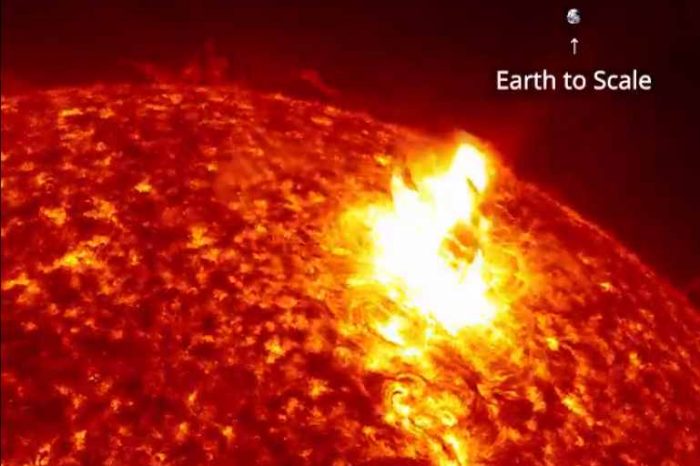Is CO2 really a pollutant? Here is the history of how carbon dioxide became a ‘pollutant’

We’ve written countless articles about climate change and what governments and organizations around the world are doing to reduce its effect on our planet. However, at its root, scientists and environmentalists alike, blame the cause of climate change on carbon dioxide (CO2) emissions.
In addition, scientists also blame the increasing level of CO2 on human activities, such as agriculture, industrial processes, and others. After all, CO2 is a gas that humans exhale and plants inhale. So, why is everyone blaming CO2 even after the United States Environmental Protection Agency (EPA) acknowledged that some positive impacts from higher CO2 concentrations in its 2009 report?
CO2 is a gas that is present in the air and also produced by cells in your body from respiration. Plants also need CO2 for photosynthesis, to produce food (glucose) and oxygen. CO2s are also added to soda and occurs in naturally carbonated beverages. So, carbon dioxide is everywhere and it is not poisonous. As a gas, CO2 itself will not poison or hurt you. It is important to remember that CO2 is a vital part of the environment.
The CO2 breathed out by our body is a by-product of the process of cell respiration. As part of this process, energy is produced in the mitochondria of cells. Both oxygen and glucose are required for this energy. Glucose contains carbon and that’s where the carbon in carbon dioxide comes from. Glucose plus oxygen produces carbon dioxide, water, and energy. When this process stops, the cell dies. So, not only is CO2 non-poisonous, but it is also needed as energy for our body. CO2 is essential for oxygen delivery to cells, maintaining blood pH, and much more. You can read 10 reasons why our body needs CO2.
Now, let’s get back on track to the pollutant question. As we were taught back in elementary school or high school, carbon dioxide only accounts for 0.04% of Earth’s atmosphere by volume. Overall, our atmosphere contains 78.09% nitrogen, 20.95% oxygen, 0.93% argon, 0.04% carbon dioxide, and small amounts of other gases. Air also contains a variable amount of water vapor, on average around 1% at sea level, and 0.4% over the entire atmosphere. By the way, according to research by Columbia University, water vapor or soot, also known as “black carbon,” is the second-largest contributor to climate change after CO2.
So, what are the sources of CO2 emissions? CO2 comes from nature and also from humans, as we explained above. Natural sources such as outgassing from the ocean, decomposing vegetation, and other biomass, venting volcanoes, naturally occurring wildfires, and even belches from ruminant animals. Human sources come from activities like cement production, deforestation as well as the burning of fossil fuels like coal, oil, and natural gas.
According to information on the government website Climate.gov, these natural sources of carbon dioxide are offset by “sinks”—things like photosynthesis by plants on land and in the ocean, direct absorption into the ocean, and the creation of soil and peat. What we find surprising is that there is really no reliable data about the amount of CO2 generated by human activities versus the ones produced by natural sources.
Nonetheless, we also know that the CO2 generated by human respiration is absorbed by the plants as part of the simple photosynthesis process. However, according to the EPA, plants are now losing their capacity to absorb all the CO2 generated by humans. In a report by Nature, humans pump nearly 40 billion tons of carbon dioxide into the atmosphere every year and only about 50 percent of these emissions are absorbed by plants in the terrestrial and ocean biospheres. At this point, you may say that the above points are sufficient enough to prove that CO2 by itself is a pollutant. Not so fast.
In 2009, the EPA published its finding for Greenhouse Gases under Section 202(a) of the Clean Air Act. As part of its finding, the EPA did not say carbon dioxide is by itself a pollutant. Instead, EPA says that “it is the increasing concentrations of the gas [CO2] that concern the agency.” Here is how the Wall Street Journal describes the EPA findings:
“The EPA’s finding doesn’t say carbon dioxide, or CO2, is by itself a pollutant — it is, after all, a gas that humans exhale and plants inhale. Rather, it is the increasing concentrations of the gas that concern the agency.”
While traditional automakers and businesses have argued over the years that “greenhouse gases such as carbon dioxide and water vapor do not contaminate the air we breathe; and rather that, they are an integral part of a complex, dynamic climate system,” in its decision, however, the EPA said that it “considers CO2 and other so-called greenhouse gases to be pollutants because of their role in propagating climate change, not because of any direct health effects.”
As you can see, the logic behind the EPA’s decision is that because too much CO2 contributes and propagates and accelerates climate change, then it is a pollutant, but not because of the direct health effects. EPA’s conclusion is confusing, to say the least. By its definition, a pollutant is “something that pollutes. any substance, as certain chemicals or waste products, that renders the air, soil, water, or other natural resources harmful or unsuitable for a specific purpose.”
As EPA explains on its website, climate change is caused by the emission of greenhouse gases, gases that trap heat in the atmosphere. Included in the list of greenhouse gases are Carbon dioxide (CO2), Methane (CH4), Nitrous oxide (N2O), and fluorinated gases. In other words, the EPA lumped carbon dioxide with five other gases — methane, nitrous oxide, hydrofluorocarbons, perfluorocarbons, and sulfur hexafluoride — into a single class for regulatory purposes. “That’s because they share similar properties: All are long-lived and well-mixed in the atmosphere; all trap heat that otherwise would leave the earth and go into outer space; and all are “directly emitted as greenhouse gases” rather than forming later in the atmosphere,” WSJ noted.
However, what is really surprising about greenhouse gases listed on EPA’s is the absence of tropospheric ozone (O3) even though it creates smog and contributes to global warming. Below is what the Intergovernmental Panel on Climate Change (IPCC) based in Geneva, Switzerland said about tropospheric ozone (O3):
“Currently, tropospheric ozone (O3) is the third most important greenhouse gas after carbon dioxide (CO2) and methane (CH4). It is a product of photochemistry, and its future abundance is controlled primarily by emissions of CH4, carbon monoxide (CO), nitrogen oxides (NOx), and volatile organic compounds (VOC).”
For those who have been following the EPA, this is not the first time the agency has excluded tropospheric ozone (O3) from the list of greenhouse gases. In its 2009 piece, WSJ said the following:
“Alternatively, tropospheric ozone wasn’t included in the class [greenhouse gases], even though it creates smog and contributes to global warming. But that gas isn’t emitted directly; rather, it is created in the atmosphere when sunlight reacts with greenhouse gases emitted by human activity such as engine combustion and industrial processes.”
As WSJ noted in its 2009 piece, “the EPA declined to consider regulating water vapor or soot, also known as “black carbon,” both of which are big contributors to the greenhouse effect but which don’t share common properties with the six greenhouse gases.”
Even though the EPA did acknowledge some positive impacts of rising temperatures and higher CO2 concentrations, the agency concluded that on balance, the negative impacts of climate change outweigh the positive.
One of the examples of positive impacts EPA gave include faster-growing trees in tropical forests, which helps offset deforestation. Another is marshes that can more quickly grow above rising sea levels, providing an insurance policy of sorts for some low-lying areas against the potential ravages of rising sea levels resulting from warmer global temperatures.
In the end, CO2 by itself is not a pollutant since it’s required for the proper functioning of our body. However, just like everything in life, EPA is saying too much CO2 is bad for the environment. As EPA pointed out, CO2 like other so-called greenhouse gases is considered a pollutant because of its role in propagating and accelerating climate change.

